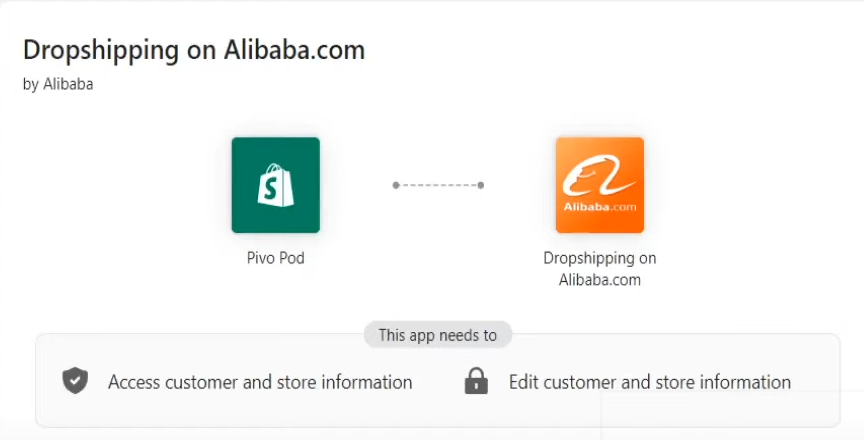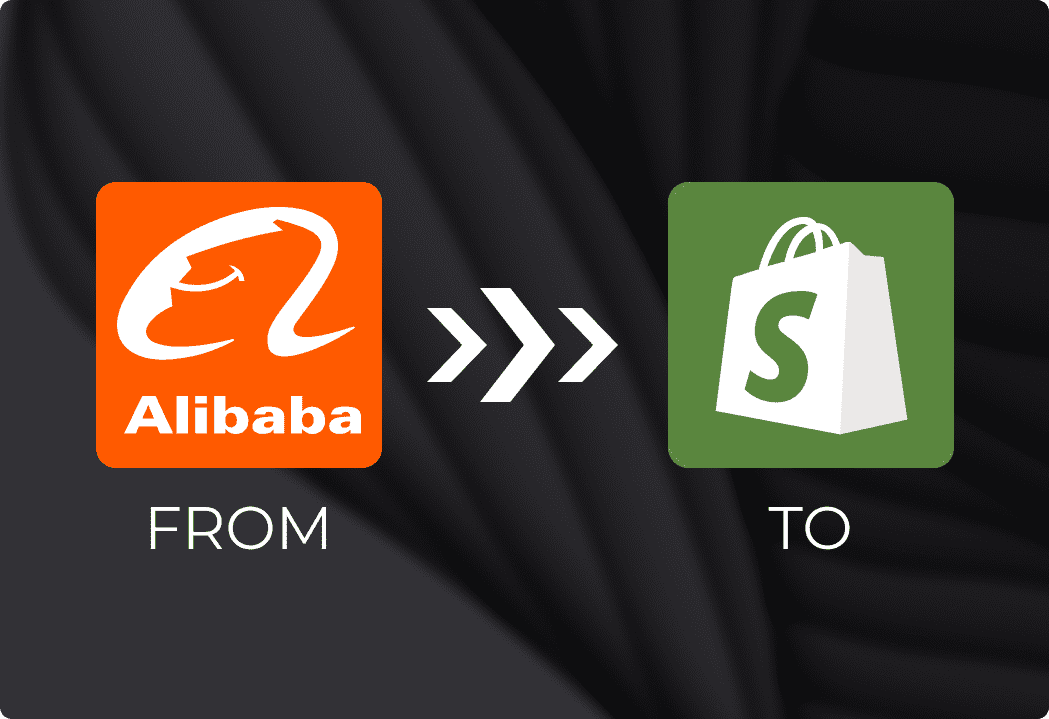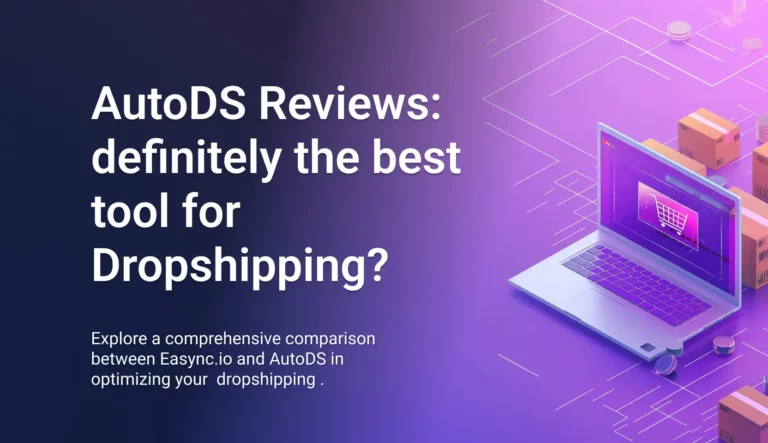If you’re planning to start dropshipping from Alibaba to Shopify, I must say that you’ve made the best decision. This is among the most lucrative ventures you can start in 2024 and make steady income.
In this guide, you’ll learn everything about Alibaba to Shopify dropshipping, from why these two are the best platforms to how to launch your business and everything in between.
Without further ado, let’s get started!
What’s the Fuss With Alibaba and Shopify?
We’ve got several dropshipping models, but why Alibaba to Shopify?
The answer is simple…Alibaba is a trusted supplier, and Shopify is a user-friendly eCommerce platform.
Alibaba – Trusted Supplier
Alibaba is a Chinese eCommerce company with interests in other fields, including internet and technology. It’s known as the world’s largest B2B trading platform and owns AliExpress, another top supplier from China.
You must be wondering why you should consider Alibaba as your number 1 supplier. Below are some of the reasons this eCommerce giant is the go-to supplier for most dropshipping businesses.
- Free platform and allows dropshipping
- Wide variety of products
- Trusted merchants
- Competitive pricing
- Global shipping options
- Private label solutions

Unlike some platforms, for example, Temu, Alibaba is a dropshipping-first marketplace and facilitates dropshipping with features such as dropshipping buyer account, Request for Quotation (RFQ) feature, and its compatibility with a range of dropshipping tools, including Shopify. The icing on the cake is that you don’t need to pay any fees, as all tools are free.
Second, Alibaba boasts a wide range of products in over a dozen categories. Whether you want to sell phone accessories or fashion items, Alibaba has got you covered. The prices, too, are competitive, and most of the merchants have been vetted, so you can be sure you’re dealing with a reliable supplier.
Another reason to choose Alibaba is its global coverage. With this supplier, you’re not limited when it comes to where you can sell. The company ships globally and offers pretty fast and affordable shipping.
You should also consider Alibaba if you want private label solutions to scale your online store from just any other Shopify store into a brand of its own. This way, you’ll be sure of growing your brand and getting repeat sales.
Indeed, Alibaba is a reliable supplier for dropshipping, but there are some shortcomings. First, you’ll definitely not miss low-quality products, which might hurt your business because of negative reviews and returns. Besides, customer support is wanting, especially if the supplier doesn’t understand English, but all should be well if you properly vet the merchant you’re buying from.
Shopify – User-Friendly eCommerce Platform
I’m sure you’re asking yourself why Shopify is such a dominant force in a market with other big names, including WooCommerce. Well, Shopify stands out from the crowd for several reasons.

According to the latest data, there are over 3.76 million live websites using Shopify, and interestingly, most are dropshipping businesses. This tells you that, indeed, Shopify is a trusted brand, so it should be the perfect solution for building your store if you want to take full control of your business.
Shopify is also the all-in-one solution you need to start your dropshipping business and sell on other channels, for example, social media, marketplaces, and even brick-and-mortar establishments. The platform tags along with all the tools you’ll need to manage products, inventory, pricing, shipping, and even payments.
Another reason Shopify is a fantastic platform is how user-friendly it is. You don’t need a developer or programmer, as the platform has an intuitive online store builder and plenty of customizable themes. It also offers much flexibility as it allows for seamless integration with other tools.
However, there are some shortcomings I must mention.
Shopify is a paid service, and the subscription costs may be quite high if you are starting a business on a budget. Another problem is that Shopify Payments, the platform’s payment processing system, is supported in just a few countries. Your only solution if your country is not supported is using 3rd party payment solutions, which attract huge transaction fees.
How to Start Dropshipping From Alibaba to Shopify
Alibaba is undoubtedly a worthy supplier as you get access to a wide variety of products at fantastic prices that will leave you with some good margins. On the other hand, Shopify is a trusted eCommerce platform with all the tools you need to run your dropshipping store.

Now, to the main business of the day: how do you start dropshipping from Alibaba to Shopify?
Let’s find out.
Step 1: Register For an Alibaba Dropshipping Account
One thing we like about Alibaba is its steadfast approach to facilitating dropshipping now that it’s a B2B platform. It goes further to offer a special account for dropshippers, which is different from that of regular customers.
The Alibaba Dropshipping Account will be important for your business as it offers access to a curated list of over 1 million winning products from over 10,000 vetted suppliers and manufacturers. Notably, you won’t be bound by minimum order quantities (MOQs).
You can also use this account to put your business on autopilot, as you can fulfill orders automatically and import the hottest-selling products in just one click. More interestingly, there’s Alibaba Trade Assurance that protects you from rogue suppliers who don’t ship on time or ship the wrong or low-quality product.
For the above reasons, you need to get an Alibaba Dropshipping Account, as it will give you access to Alibaba Dropshipping Center.

Step 2: Get and Set Up Shopify
With an Alibaba Dropshipping account, you now need to get Shopify. This will be the store where your products will be listed. To run your business on Shopify, you’ll need two things;
- Subscription
- Domain
As mentioned earlier, one of the shortcomings of Shopify is that it’s not a free platform. You’ll need a paid subscription to start selling and enjoy all the features and tools. There are 3 Shopify plans: Basic for individuals at $32 a month, Shopify for small businesses at $92 a month, and Advanced for medium and large enterprises at $399 a month.

Note: You can always try Shopify with the 3-day free trial period and take advantage of the lucrative discount that costs just $1 per month for the first 3 months.
You’ll also need a domain name, and this will be important if you want to stay on top of your branding. There are many domain names, but settling for one can be an uphill battle. However, we recommend top-level domains such as .com and .net that blend well with your product line. One thing we like about Shopify is that you don’t need hosting, as this has already been taken care of in all the plans thus saving you the expensive hosting costs.
Now that you’re armed with a plan and a domain, next you need to choose a theme and customize it to your liking. Have a logo and a color scheme that will be consistent in all your branding.
Step 3: Sync Alibaba and Shopify
We want to synchronize Alibaba and Shopify to leverage all the dropshipping tools offered by the two platforms for harmony.

To connect your Shopify store with Alibaba, you need to log in to your Alibaba account and your Shopify dashboard. Then navigate to the Apps page, or simply search for Alibaba Dropshipping on the search bar. You’ll be redirected to the Shopify app store, where you’ll need to install the Alibaba app.
Remember, you’ll also need to set up your preferred payment methods, be it PayPal, Amazon Pay, Apple Pay, Stripe, you name it. Make sure to fill in all the information correctly. The shipping options must also be configured to either flat-rate or calculated shipping. Know what works best for you.
Step 4: Embark On Product Research

You now have a ready Shopify store integrated with Alibaba, your trusted supplier. The next step is to embark on product research, and here, the big question is, what Alibaba products sell best?
Product research is an important stage in the establishment of your business and goes beyond, as you’ll be constantly looking for new products to add to your store.
So, how do you find the best products to sell?
We’re glad that with the Alibaba Dropshipping Account, you get access to the dropshipping center, which has an ever-expanding list of the hottest-selling items. These are handpicked products that will surely sell and yield some good profits.

Alibaba’s dropshipping center comes in handy during product research, but you can also step up your efforts by combining a tool like Easync that shows you all the trending products that are in demand. Once you spot a product, find if it’s available on Alibaba. As one of the leading marketplaces in China, you’ll hardly miss something you’re looking for. You can, of course, deploy other product research methods, including Google Trends and exploring TikTok videos.
Step 5: Product Import
One of the advantages of Shopify and Alibaba is the fact that product import has been streamlined in that you don’t necessarily need a product import tool. The two sync together to facilitate one-click product import from Alibaba to your Shopify store.
To make your product research and import effortless, Alibaba has a feature dubbed Import List, where you can save your products during research for later reference. Once a product is in the Import List, you can easily transfer it to your Shopify store by clicking the Push To Store option.

Step 5: Pricing and Profits
The 5th step in this guide on how to start dropshipping from Alibaba to Shopify deals with money matters. This is where many entrepreneurs fail, so you need to be extra vigilant here to avoid losses.
As a basic rule, you need to factor in all costs before setting the final price. Of course, costs include the supplier’s price, shipping fees if required, taxes, and the store subscription fees.
But the big question is, what should be your margins?
Well, it’s hard to put a figure as it depends on what you’re selling. But generally, the best dropshipping margins range between 20% and 40%. But for a start, be content with small margins to at least rake in some sales.
Step 6: Market Your Shopify Store
By now, you have a running Shopify store, but is it time to relax? Absolutely not. In fact, it’s time you need a lot of psyche and dedication to start bringing in traffic and converting leads into sales.
Remember, you’re not selling on an established marketplace like Amazon or eBay, so you need to market your store. You can market your store using different methods, as discussed below.
- Ads
- SEO
- Social media marketing
- Email marketing
Ads are a great way to get instant traffic and sales, but you’ll need a good budget to get the results. Another marketing option is search engine optimization, which is quite an effort, but the good thing is that the results are long-term, unlike ads. Social media marketing is an asset, considering there are around 5 billion social media users worldwide. Newsletters also do work, but try this method once you’re already established.
Step 7: Fulfill Orders
Your core responsibility in your Shopify dropshipping business is finding products to sell and bringing in sales. The supplier is responsible for fulfilling the order.
But as a smart entrepreneur who values their customers, you shouldn’t relax just yet.
Make sure your supplier delivers the order on time. You should also ensure there’s constant communication with the buyer on the status of their order. Remember, you may not be responsible for fulfilling the orders, but it’s your responsibility to ensure returns are handled as per the policy of the supplier and your store.
Importantly, maintain communication with the buyer on your latest products, promotions, and other goodies they might be interested in.
Scaling Your Alibaba to Shopify Business
The eCommerce landscape is ever-changing, so you need to find ways of scaling your business to stay afloat and blossom into a worthwhile online venture. In this segment of this guide on how to start Alibaba to Shopify dropshipping, we’ve shared crucial tips that will be instrumental in the growth of your business.
They say customer is king. To grow your business, make sure you have reliable customer support across multiple channels. You should endeavor to answer all messages – nothing should fall through the cracks. That message you want to ignore could be a potential sale, a repeat customer, and your brand’s ambassador.
You should also leverage automation fully. Automate every stage of your business, from product research to fulfillment. Automation saves a lot of time that you can channel to other important aspects of your business. Furthermore, automation reduces human errors.
Last, consider offering free shipping. According to statistics, 9 out of 10 customers say that free shipping is the biggest incentive in online shopping. Besides, strive to ensure customers get their orders within the shortest time possible by selling items that are in local warehouses.
Wrapping Up
We’ve come to the end of this Alibaba to Shopify dropshipping guide and as you have seen, this is a fantastic business opportunity if you get everything right. To start dropshipping from Alibaba to Shopify, you need to first set up your accounts and then find and import products to sell. You also have to hit the ground with working marketing strategies and scale your business with automation. So, what are you waiting for? Start dropshipping from Alibaba to Shopify today and make that extra income.
Frequently Asked Questions (FAQs)
1. Is Shopify actually free?
No, it’s a premium service. To use Shopify, you need a paid plan, but of course, there’s a 3-day free trial, so you can first try the service to gauge whether it fits the bill or not.
2. Is dropshipping from Alibaba to Shopify allowed?
Yes, of course. Alibaba is a dropshipping-friendly platform that allows sellers to list products on the platform, and besides, there are exclusive features designed to help dropshippers manage their businesses.
3. Is Alibaba to Shopify dropshipping profitable?
The Alibaba to Shopify model is profitable. But remember, just 10 % to 20% of dropshipping businesses thrive, so you need to have a formidable plan, dedication and resilience to succeed.


